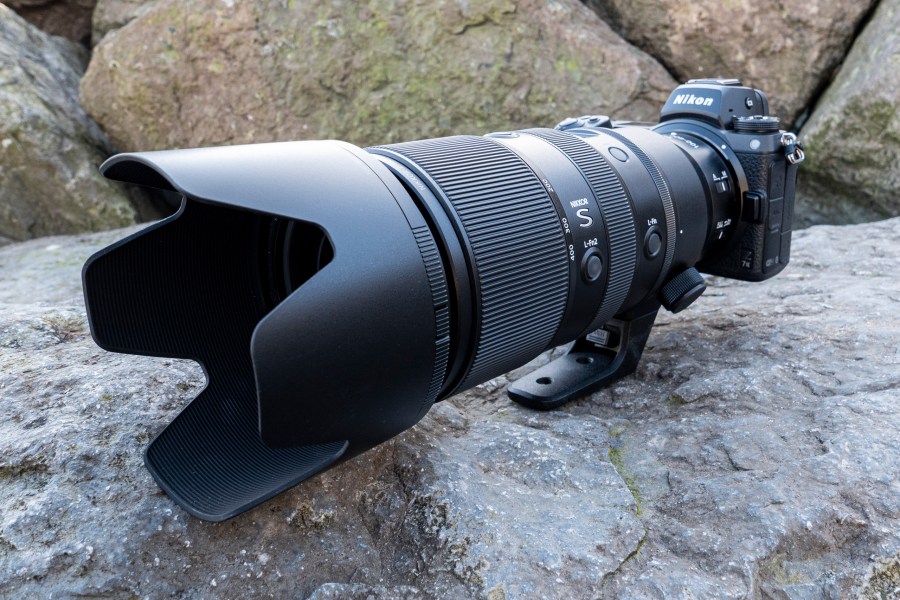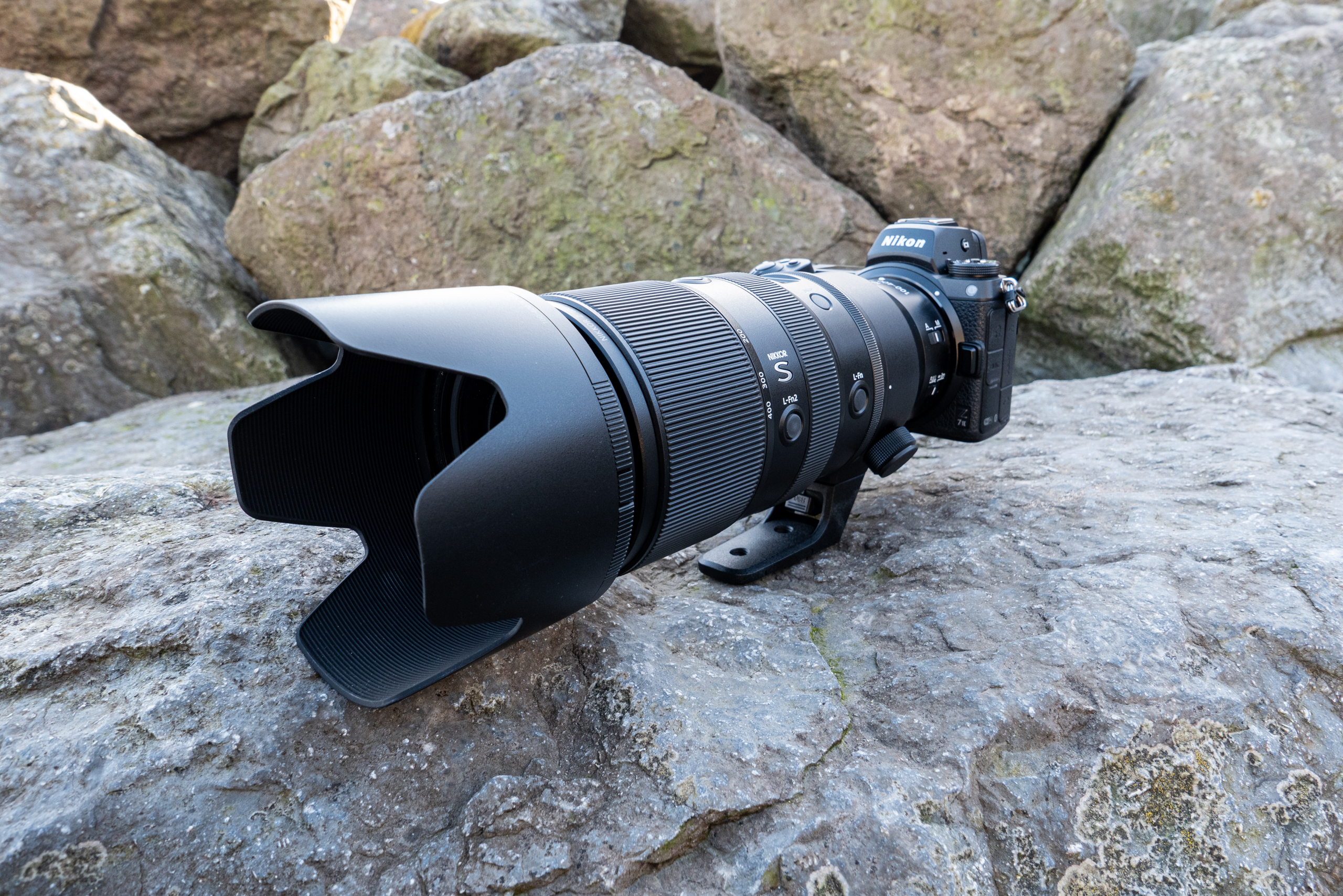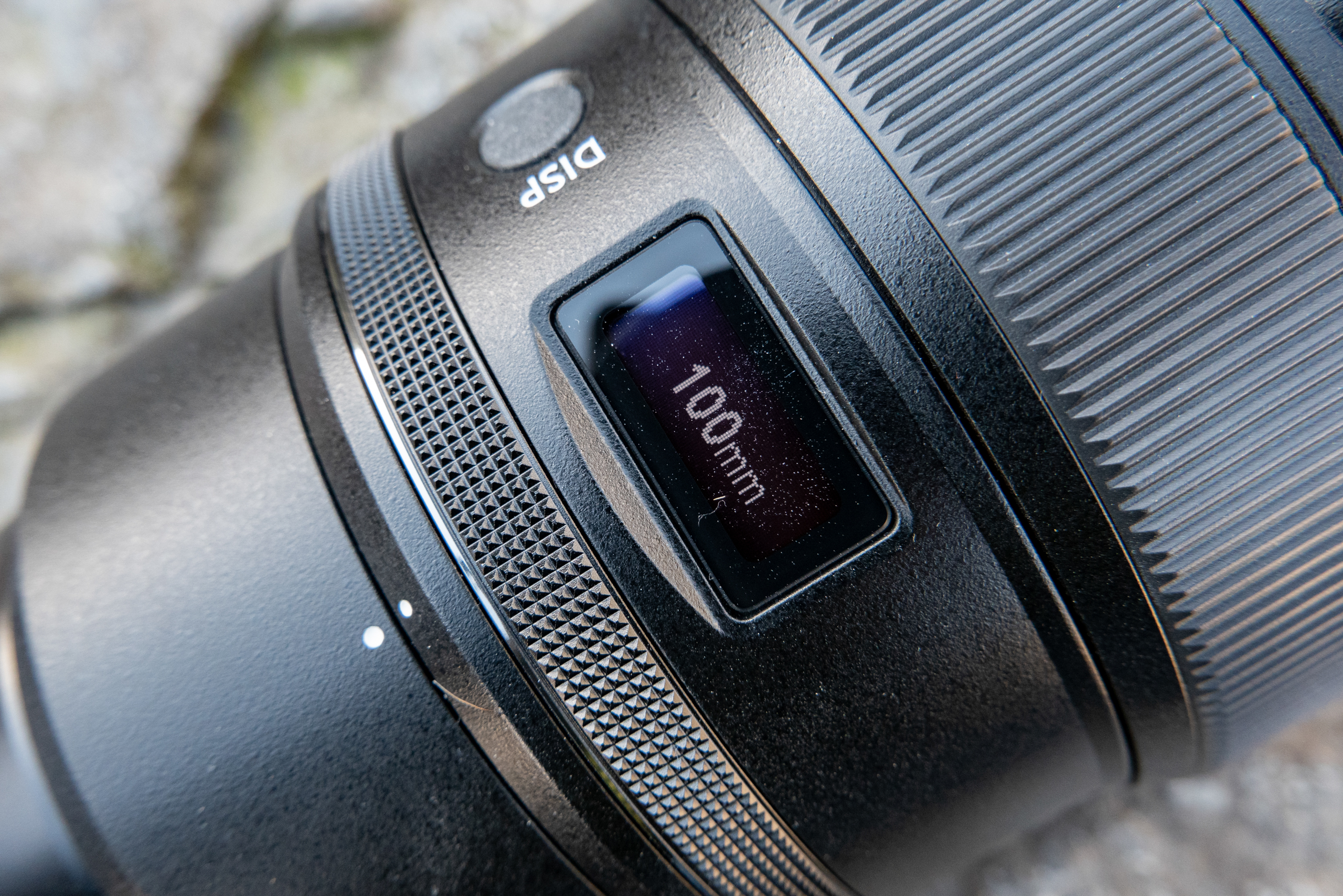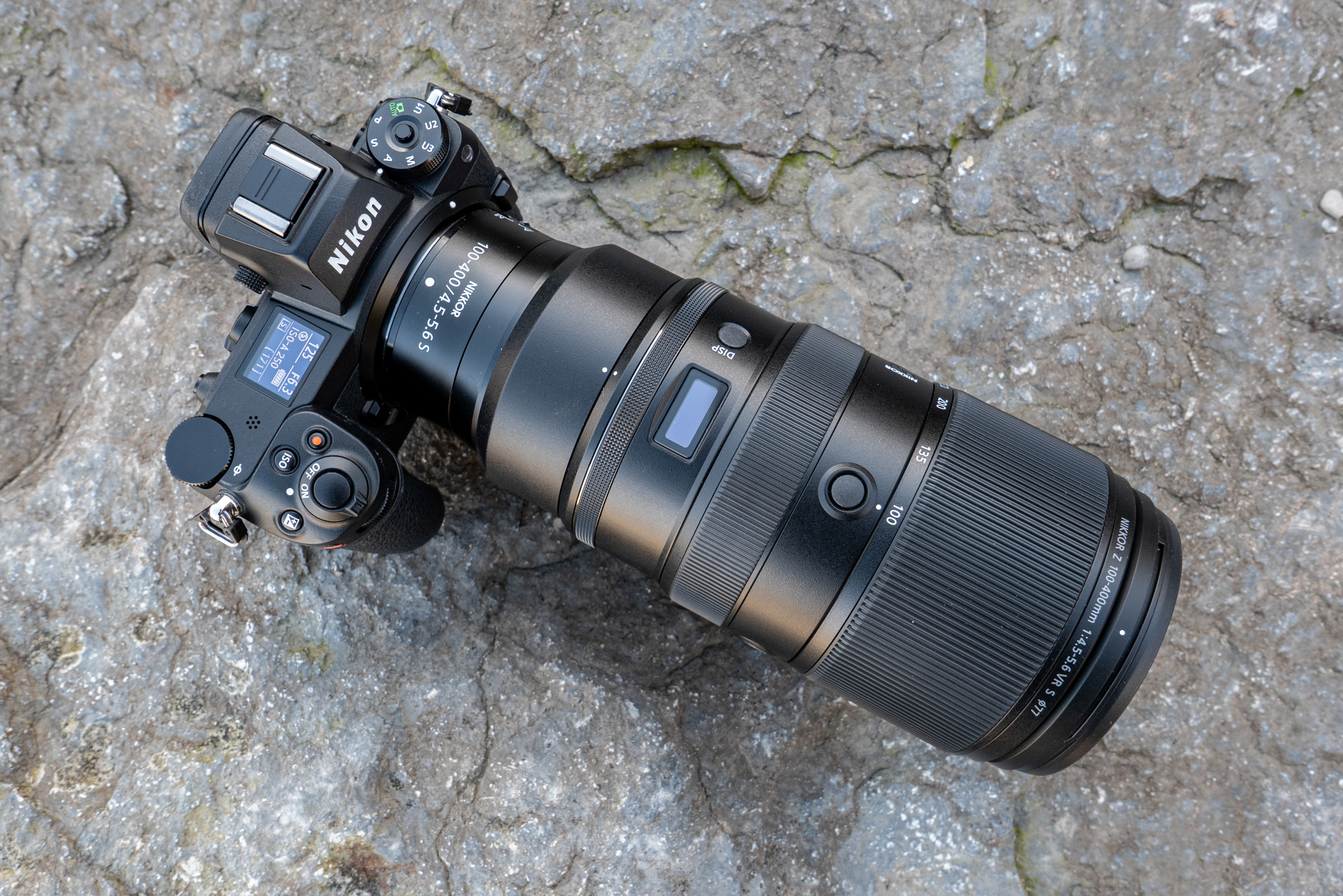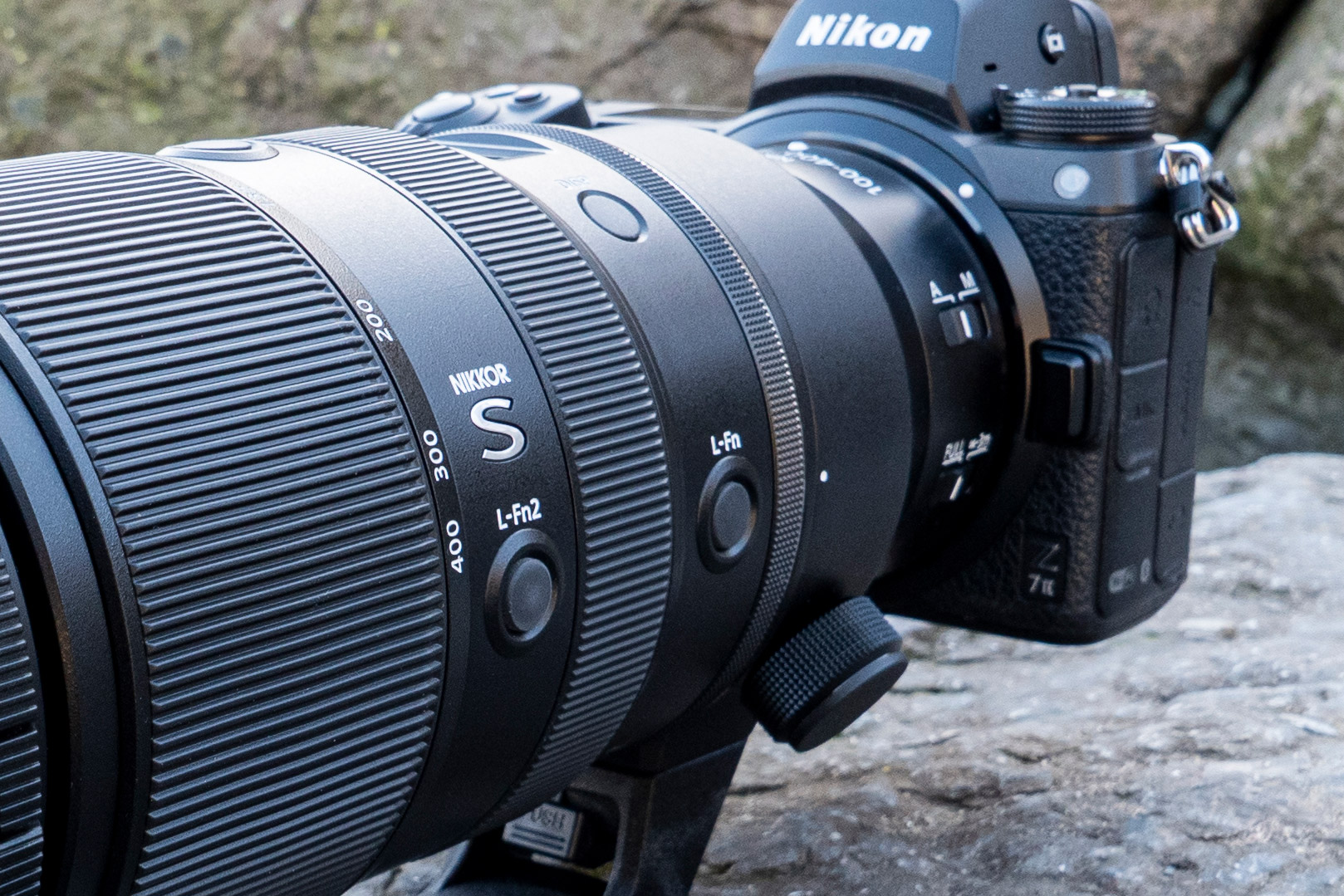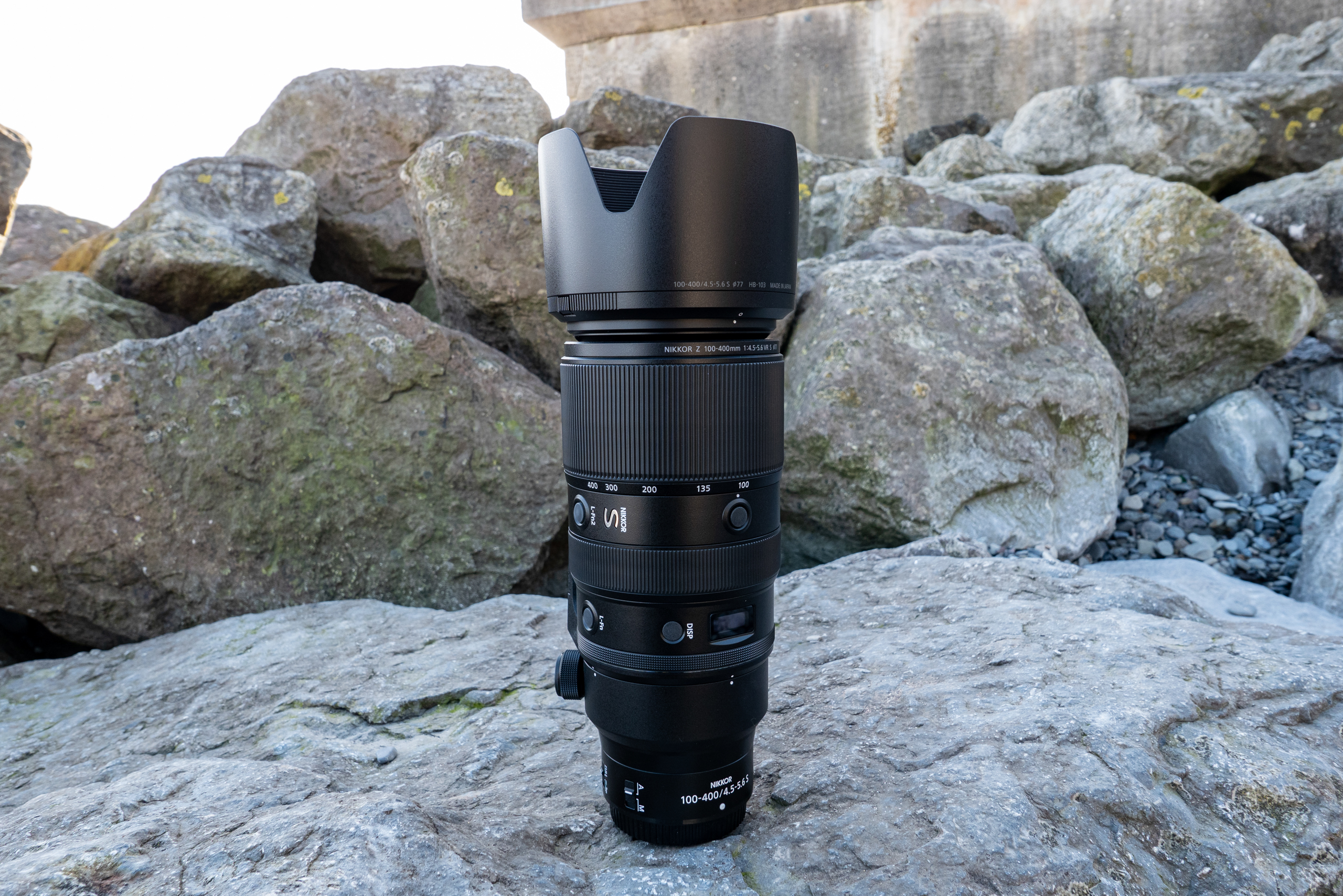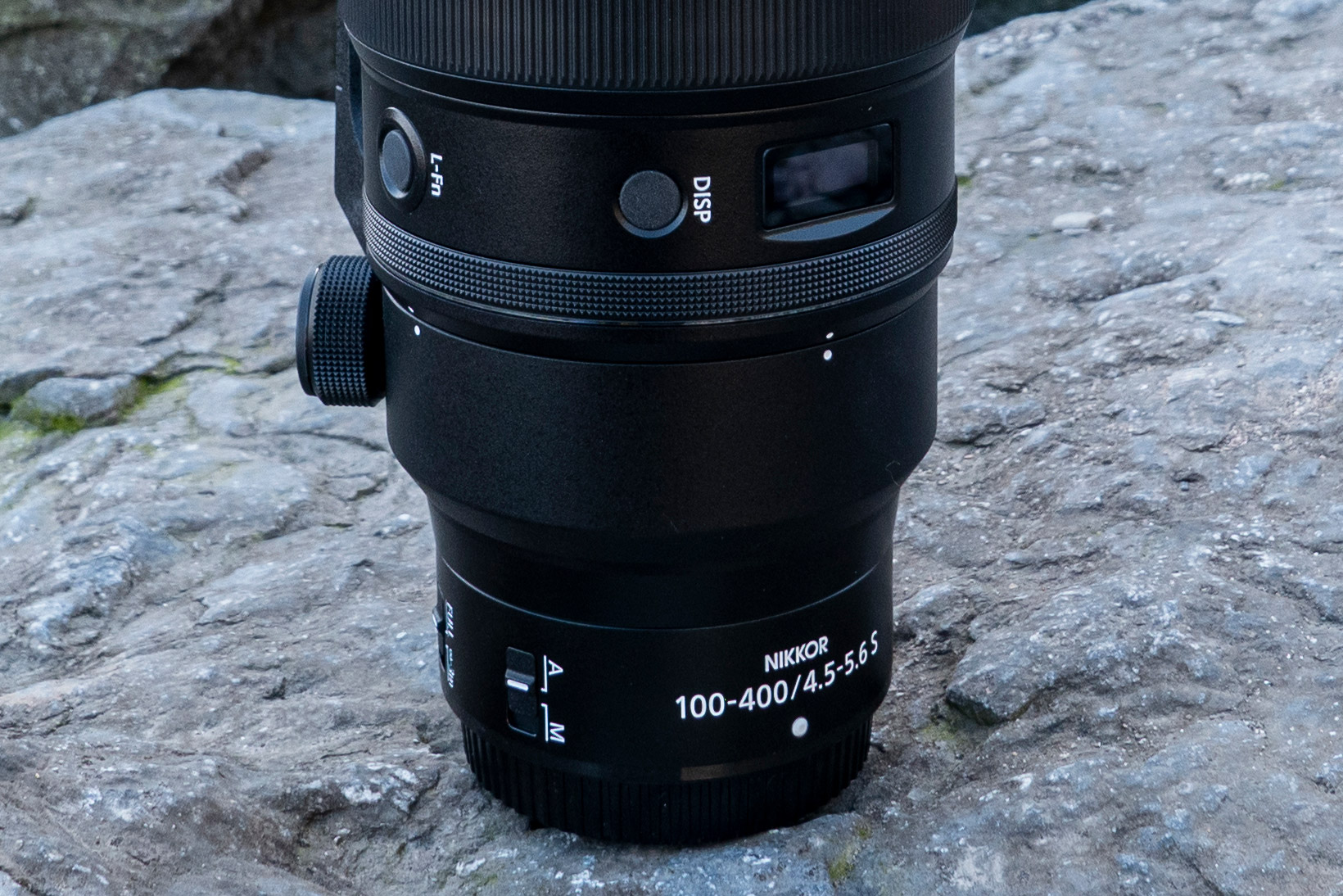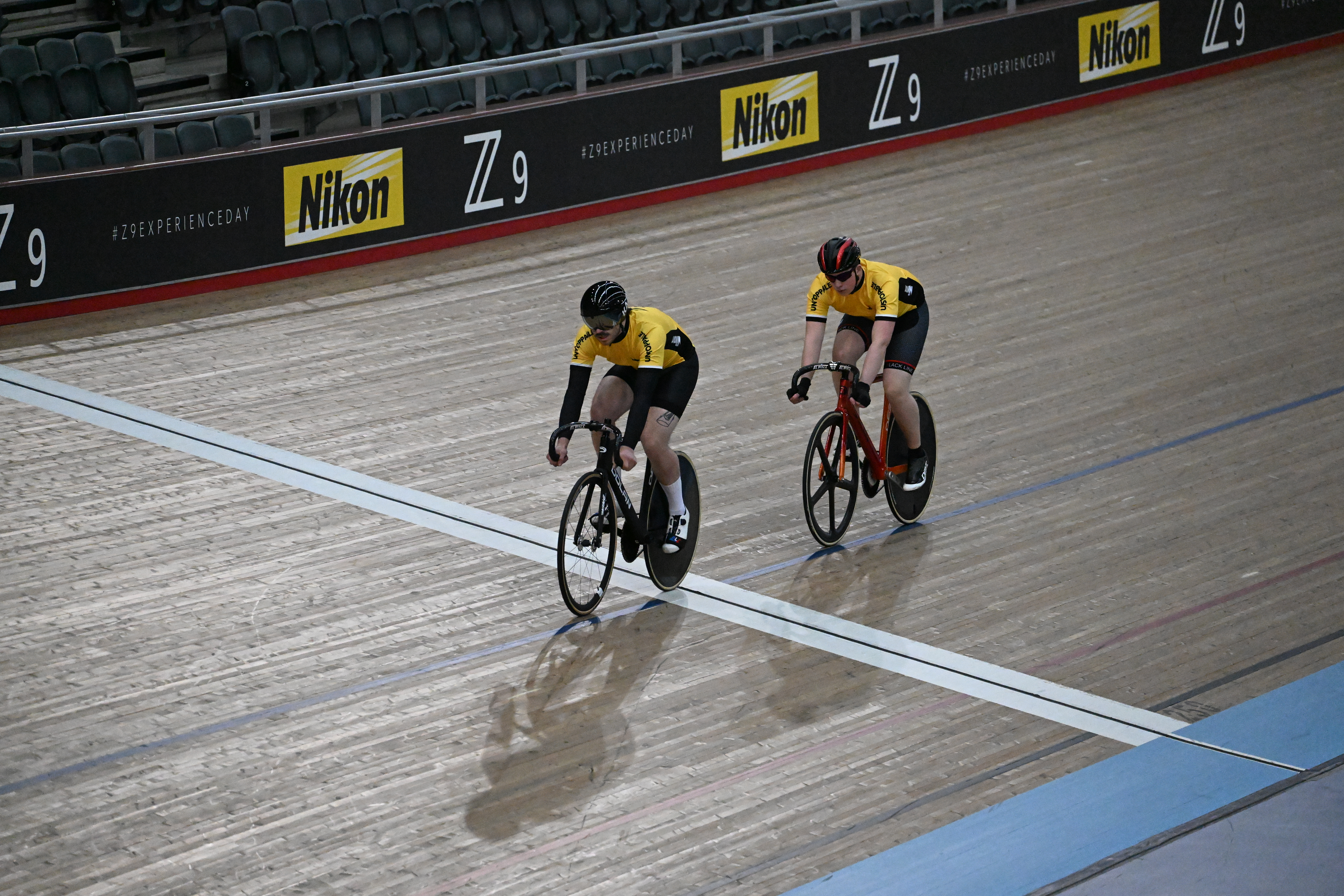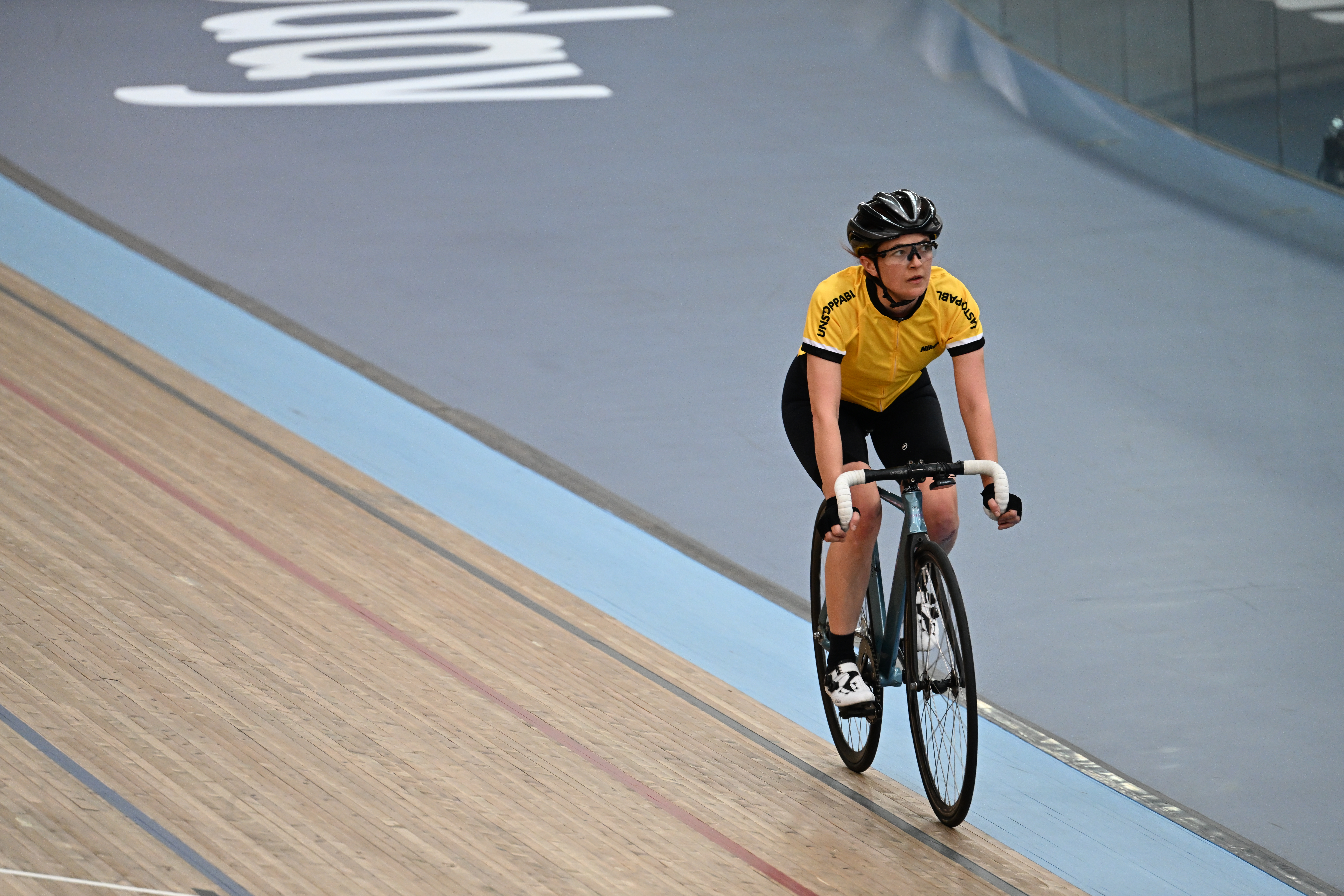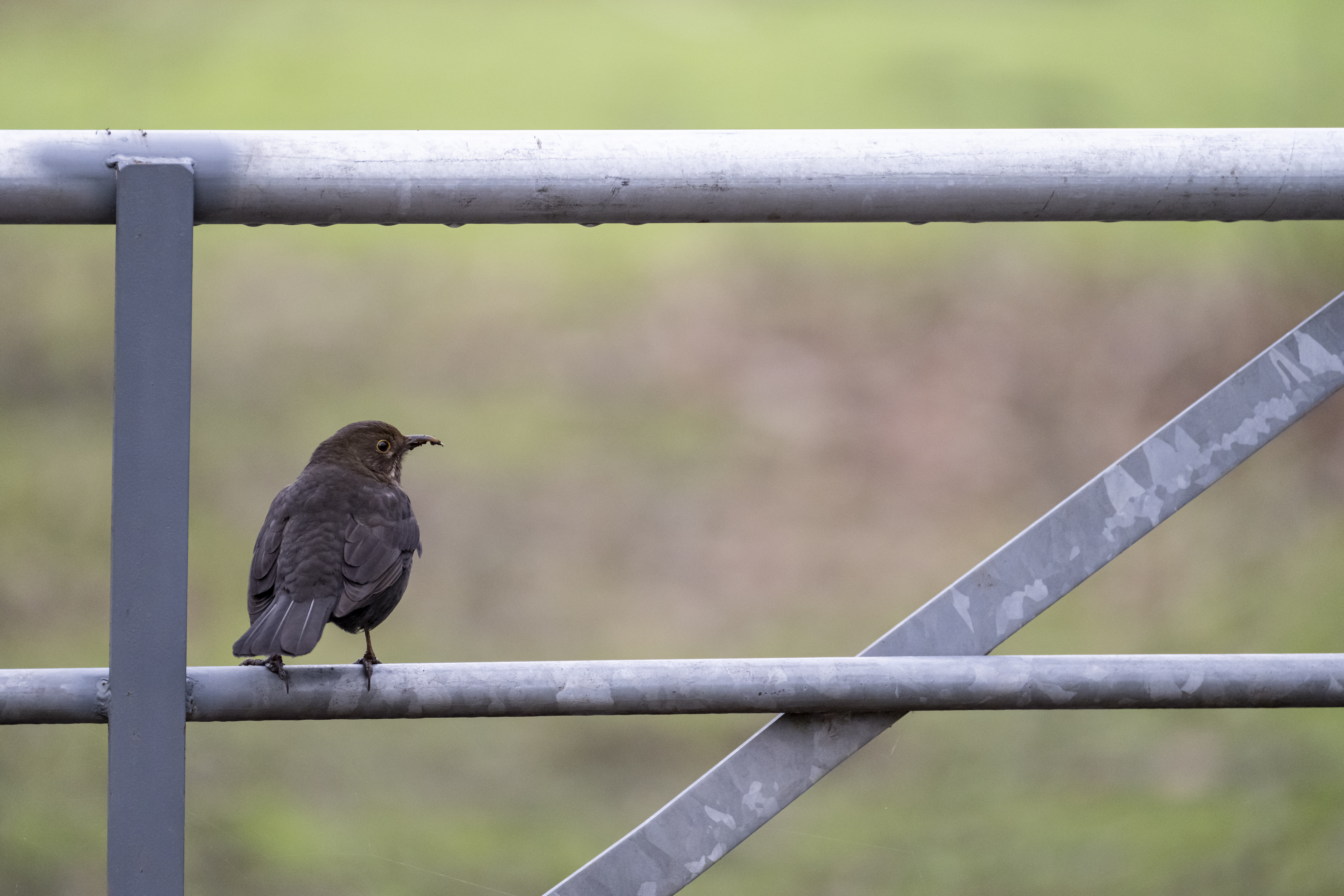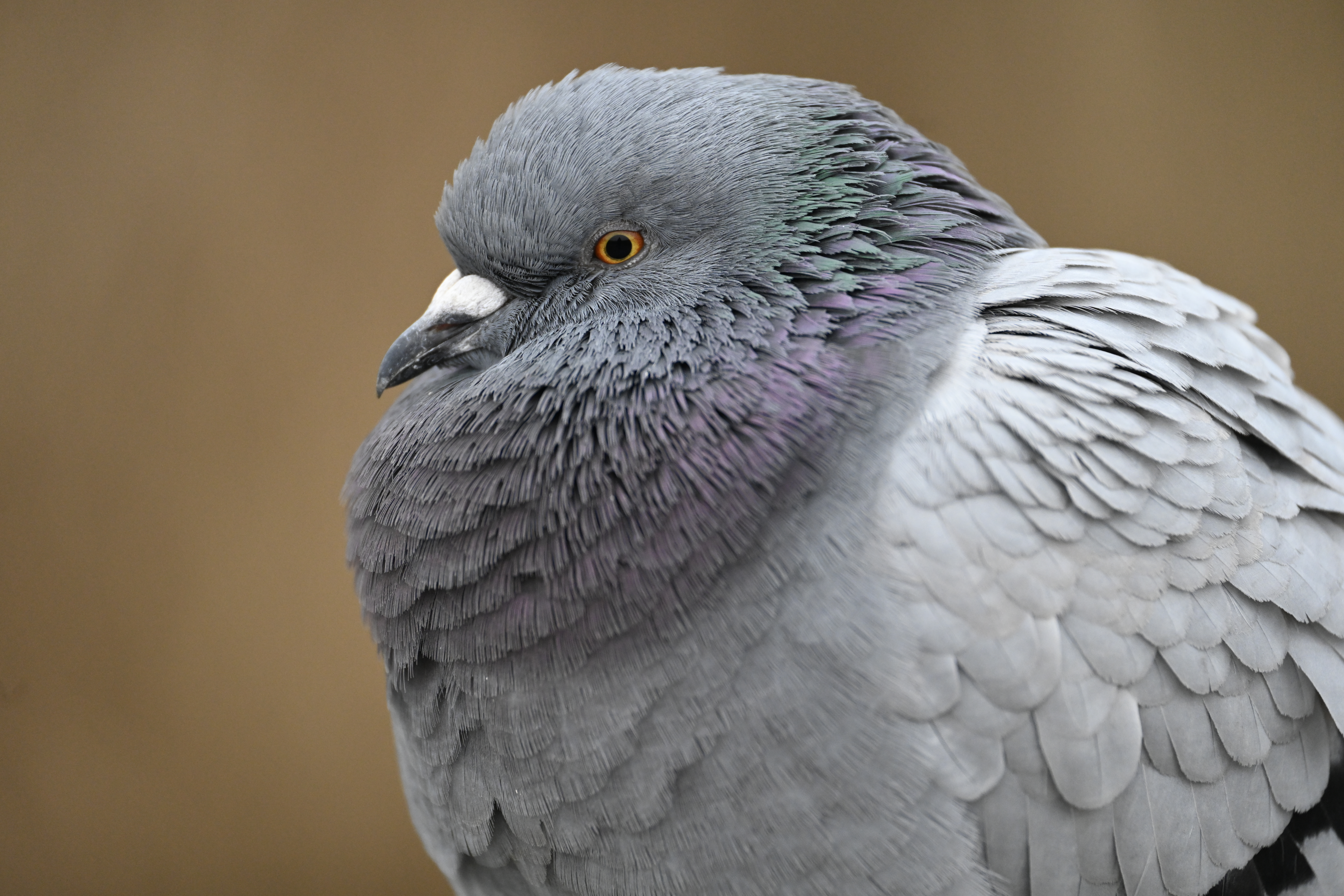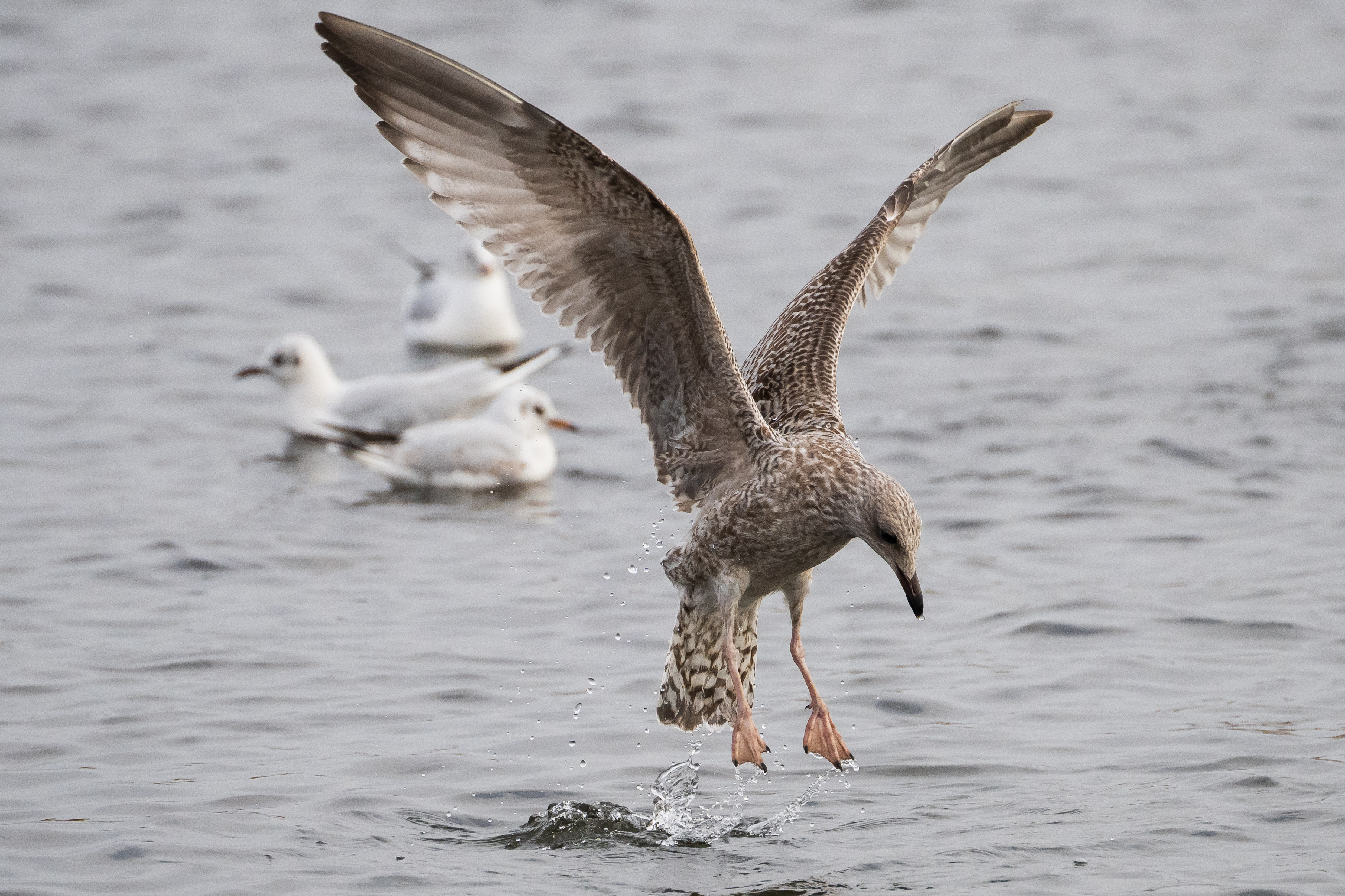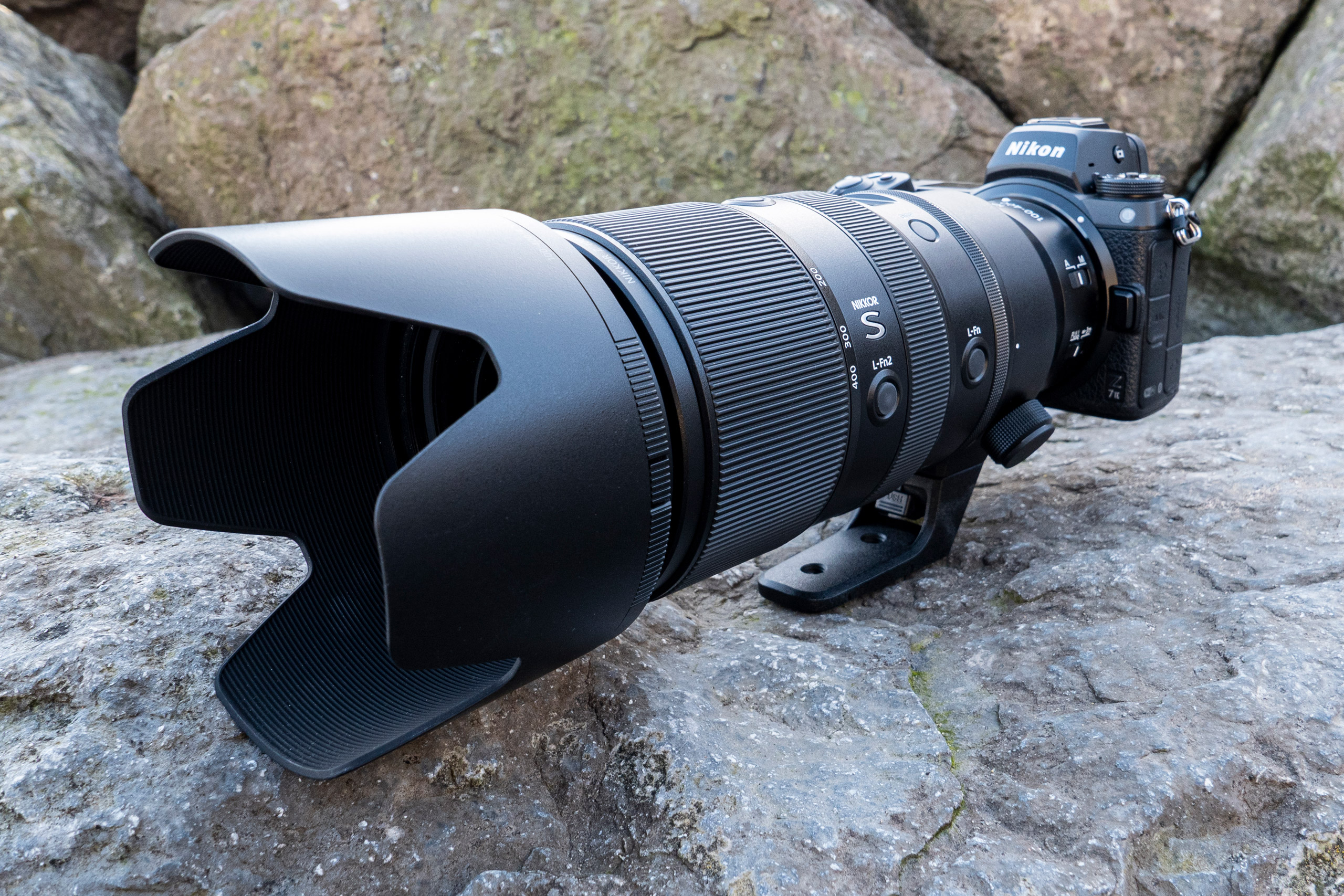Up until the Nikon Nikkor Z 100-400mm f/4.5-5.6 S was introduced, the longest native lenses available for Nikon’s Z series full-frame cameras topped out at 200mm, in the form of either the Z 70-200mm f/2.8 VR S or the lower-priced Z 24-200mm f/4-6.3 VR. Neither of these optics are hugely suitable for those who like to photograph genres like wildlife or sport, where the subjects tend to be a good distance away.
However in the past few months, a number of long optics have finally made their way onto the market, with the Z 100-400mm f/4.5-5.6 VR S also joined by the Z 800mm f/6.3 VR S and the Z 400mm f/2.8 TC VR S primes. With the latter two lenses costing £6,299 and £13,499 respectively, the average photographer will likely plump for the more versatile and affordable 100-400mm option.
If you need to go longer still, this lens is also compatible with the Z Teleconverter TC 1.4x and the Z Teleconverter TC 2.0x, bumping up the maximum focal length to 560mm and 800mm respectively.
Coming in at £2,699, it’s not exactly cheap, but if you’re likely to get a use out of it, could be considered well worth the money. It’s roughly similar in price to the 70-200mm f/2.8 S lens, and what you lose in aperture, you gain in focal length. This is a compromise for each individual photographer to decide upon.
Nikon Nikkor Z 100-400mm f/4.5-5.6 S Features
With 25 elements in 20 groups, the lens construction includes six ED (Extra-low Dispersion) elements, which are designed to correct chromatic aberration. As we’ve seen with other S series lenses, the 100-400mm employs Nano Crystal and ARNEO coatings, which combat ghosting and flare, even when shooting directly into bright light sources. The front element has a fluorine coating which repels dirt and can be easily wiped clean. A lens like this is designed to be used outside, so it’s good to note that it comes with full weather-sealing, which is designed to keep out dust and moisture.
There are nine diaphragm blades to create the aperture. Focusing is internal, with the minimum focusing distance being 0.75m at the 100mm end of the lens, rising to 0.98m at the 400mm end of the optic. With its 0.38x magnification ratio, it’s a good option for macro type subjects such as flowers. The filter thread is 77mm, the same as some of Nikon’s other optics.
As we’d expect from a lens of this focal length, there’s onboard VR (vibration reduction), which promises 5.5 stops compensation. That’s useful if you want to use slower shutter speeds while working with the lens handheld.
Nikon Nikkor Z 100-400mm f/4.5-5.6 S Build and Handling
Weighing in at 1.35kg, the lens’s mostly plastic construction helps to keep it a manageable weight. It’s light enough to use hand held, although a tripod or monopod is recommended for ultimate sharpness. A tripod collar is included in the box, which can be removed if you want to keep size and weight as low as possible. A lens is hood also included, which can be reversed when not in use for easier transporting.
As this is quite a large lens, it can accommodate more controls than smaller Z optics. As such, there is diverse range of buttons, switches and dials to take note of, plus a digital display. Switches for manual focus and autofocus, as well as a focus limiter, are found towards the mount.
There are two pairs of L-Fn buttons, which can be assigned to control a number of different functions. Having two pairs means that you should always be able to reach one with ease, no matter how you’re holding the lens. The digital display shows focus distance, aperture or focal length – you’ll need to press the “Disp” button next to it to move through these different options.
Three different rings are found on the lens. The narrowest, which is closest to the mount, can be set to control a limited number of functions, including aperture, exposure compensation or ISO. Alternatively, it can be set to do nothing at all – handy if you find yourself turning it accidentally. In the middle you’ll find the focusing ring, while the zoom ring is found towards the front. It is marked in focal lengths of 100, 135, 200, 300 and 400mm, which is useful for quickly adjusting the lens.
A small zoom ring rotation of just 80 degrees means you can go from the wide-angle end to full zoom extremely quickly, and without changing your grip. That’s very useful when you’re tracking fast-moving subjects and need to quickly change your composition. On top of that, there’s no zoom creep, even when holding the lens pointing upwards or downwards, so you can be reassured that it’ll always be in the place you left it.
Both the zoom ring and the manual focus ring are ridged, which gives good grip. It’s very easy to tell which is which through feel alone thanks to the difference in size. The control ring has a dotted texture, which is another helpful for cue to spotting the difference when shooting through the viewfinder. Although the manual focus ring doesn’t have hard stops, a distance scale appears in the viewfinder to guide the direction of movement. Focus peaking or magnified view can also help to keep manual focusing as accurate as possible.
At 222mm in length at its shortest, the 100-400mm is not exactly small, but it is roughly the same size as the 70-200mm f/2.8 lens. If you’re intending to travel relatively light, say while on a safari or similar, pairing this lens with something such as a 24-70mm or 24-120mm lens would be a good idea. Thanks to its size and weight, the 100-400mm lens balances best with full-frame models in Nikon’s Z line-up. It works particularly well with the Nikon Z 9, but is also suitable for the Z 7 II, Z 6 II and Z 5 bodies. We wouldn’t especially recommend it be used with DX-format bodies like the Z 50 or the Z fc, as it would be very unbalanced and unwieldy. Users of those cameras are likely to be better served by the Z DX 50-250mm f/4.5-6.3 VR lens.
Autofocus
Most photographers are likely to use this lens with autofocus, especially if they’re tracking moving subjects such as wildlife and sports. I tested it with the Nikon Z 7 II, and also asked a press and sports photographer for his thoughts on using it with the Nikon Z 9. It’s clear that with the latter’s superior autofocusing capabilities that it’s this camera which is the ideal match for the lens, but if your subjects are moving in a relatively predictable fashion, cameras in the Z 7, Z6 or even Z 5 series also put in a good performance.
In the majority of situations, the 100-400mm focuses quickly and quietly. If you’re shooting in almost silent conditions, you might be able to hear a very quiet noise when shooting in Continuous AF, but that’s unlikely to be problematic for most. When recording video, focusing is silent if you switch to AF-F (full-time AF), which is pleasing to note.
Very low light situations see the lens hunt a little bit on occasion, but there was never a false confirmation of focus presented. Indeed the AF seemed to cope well in the vast majority of situations, ranging from subjects which appear very large in the frame, to smaller subjects from quite a distance.
Nikon Nikkor Z 100-400mm f/4.5-5.6 S Image Quality
Despite being primarily presented as being a lens for sports and wildlife photographers, having the versatility of 100-400mm actually makes it well-suited to a number of different genres. As well as those obvious genres, you might also consider it for portrait work, architectural and landscape details and even still life imagery, such as food and flowers.
As the lens has the “S” moniker, we expected it to have a good degree of sharpness, which happily is borne out by the images produced. Sharpness is maintained well across the frame as well as throughout the different focal lengths. There is some softness to be seen from around f/22 – the minimum aperture available is f/36 – but we’d expect this anyway.
Images produced by this lens are overall very high in quality, with all of the above subjects and genres tackled well. There seems to be very little in the way of obvious ghosting and flare, even when shooting directly into strong light sources – such as the late afternoon sun – while chromatic aberration is also pleasingly absent.
Despite having a relatively narrow maximum aperture range of f/4.5-5.6, you can still achieve attractive shallow depth of field effects, with pleasant rounded bokeh. There seems to very little evidence of vignetting created at the widest aperture of f/4.5. We’d be surprised to see objectionable distortion from a lens like this, and indeed it’s very hard to find any – even when shooting subjects with very straight lines.
Nikon Nikkor Z 100-400mm f/4.5-5.6 S Verdict
With the original Z series cameras not being hugely suited to fast-moving subjects such as wildlife and sport, it perhaps was no surprise to see longer focal length lenses taking a while to be available for the native mount.
As the cameras have continued to improve apace, particularly with the incredible Z 9, it makes complete sense for those longer focal lengths to start appearing.
Professional users are likely to be drawn to the prohibitively expensive prime lenses, but for those of us with more staid budgets, lenses such as this offer a good compromise between performance and affordability.
Although it would be unfair to claim this is a “cheap” lens, for the versatility across multiple subjects that you can access with it, in terms of value for money it can be considered good if you’re particularly keen on shooting from a distance.

A cormorant stretches its wings at Cardiff Bay on in Cardiff, Wales. 1/800s, f/5.6, ISO1000, 400mm, Nikon Z9 (C) Matt Horwood
Overall, the lens puts in a very pleasing performance and it’s easy to recommend it for those looking for a lens which offers a long focal length. That said, if you already have the 70-200mm f/2.8 lens, you might instead want to consider opting for a teleconverter to boost that optic, rather than investing in an entirely new one.


